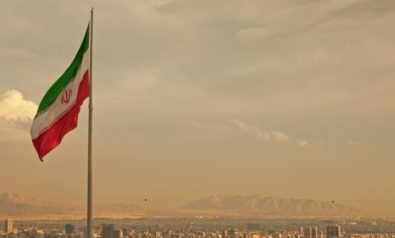A former Aum Shinrikyo member reveals how difficult it is to distance oneself from the group once you decide to leave.
Nagaoka’s son, who has asked for his name to be withheld to protect the privacy of his family, first joined Aum Shinrikyo in the fall of 1987 when he was still a college student studying Indian philosophy. He had always been fascinated with religion and had, by this time, read more than 2,000 books on the subject. Picking up a couple of books published by Aum, he was surprised by the cult’s progressive ideas.
It didn’t take the son long to fall under the spell of visually impaired Aum guru Asahara, whose real name is Chizuo Matsumoto. He started to study the teachings of the cult and take part in yoga classes. He went on to take part in a ten-day “madness” camp, during which participants were forced to undergo severe training that tested their physical strength to the limit. Desperate to become a fully fledged member, the son devoted himself completely to the cult.
Even though he was a college student, he made donations to Aum as often as he could, even skipping meals on occasion to save whatever money he could. “Mind control is sort of like magic—anyone is in danger of falling into that trap,” the son says. “Aum made it seem like you were free to make choices but, in reality, you were being guided toward those choices.”
He quickly took on a prominent role inside the cult, representing Aum in the media and opposing the actions of his father, who had founded a support group for parents whose children were being brainwashed by Asahara.
The Bond
Like other cult members, the son was taught to believe that relationships with parents were unnecessary because they only represented his present life.
“The bond between Aum members was very strong because we thought we were connecting on a spiritual level,” he says. “We believed we are connected in our past lives as well as the future through reincarnation. I didn’t have a good relationship with my father at the time. I was taught that anything he said was evil nonsense.”
The son dedicated himself to Aum activities and worked tirelessly in the cult’s 1990 bid to get Asahara and 24 other members elected into the Diet. Eating one meal a day and sleeping a couple of hours each night, he spent his days distributing fliers and putting up campaign posters of Asahara.
One morning, he woke up suffering from amnesia—he had no idea who he was or what Aum Shinrikyo did. After a few days, he recovered most of his memory prior to his association with the cult, including his father’s phone number. His days with the cult were numbered.
After conducting his own research into Asahara and Aum Shinrikyo, he realized he had been lied to and was finally able to escape. “I was the son of the chairman of an Aum victims’ support group,” the son says. “If I had stayed, I would have either been killed or been forced to become involved in the sarin attacks.”
He went on a trip to India with his parents to meet with a close aide to the Dalai Lama, who denied that the Nobel peace laureate had instructed Asahara to propagate “real Buddhism” in Japan.
The son says he was able to escape the cult because of his parents, especially his father, Nagaoka, who refused to give up on him. Nagaoka publicly stood up to the cult not only to help his son, but also other parents whose children had been brainwashed.
Atone For Your Sins
By doing so, however, Nagaoka made himself a target and was attacked with VX nerve gas shortly before the sarin subway attack. He was almost killed in the attack.
“I feel terribly guilty for what I put my father through and always will,” the son says. “If I hadn’t joined Aum, he wouldn’t have been targeted in the VX attack. It was because of my father and mother that I was able to leave Aum. Not everyone is as lucky as I am because some people don’t have a family to go back to.”
The son has succeeded in helping more than 30 people leave Aum Shinrikyo. To this day, however, he regrets failing to convince convicted Aum member Masami Tsuchiya to quit. A few years before the sarin attack, the son spent weeks visiting a facility in Ibaraki Prefecture, where Tsuchiya was being detained by his family members. He spent up to ten hours a day talking to Tsuchiya, who remained impassive and eventually returned to the cult. Tsuchiya is now on death row after being found guilty of making the toxic gas that was used in the subway attacks.
“I’m sorry I couldn’t convince Tsuchiya to quit. If I had been successful, there probably wouldn’t have been sarin attacks in Matsumoto or Tokyo,” the son says. “Tsuchiya was older and smarter than me, and [he] looked down on me as a failure. Nothing I said reached him.”
The son was in his mid-20s when the sarin attack happened. Now 46, he works as a contract employee and is also a certified Tibetan Buddhist monk.
He still tries to help some of the existing 1,650 members of Aleph and Hikari no Wa groups leave if approached by their families, but he says it’s not easy to juggle a family and a full-time job.
“There are now people in my life that I need to protect and I can’t fully commit (to helping members quit),” the son says, noting that it takes countless hours to convince a member to leave.
Meanwhile, the people he once considered to be closer than his family are now on death row.
“If you kill someone, you have to atone for your sins in this life in accordance to Japanese law,” he says. “It’s true (the 12 men on death row) might have been under Asahara’s influence, but the reality is that they killed people. I don’t think our tax money should be used to keep them alive.”
*[The full version of this article was originally published by The Japan Times.]
The views expressed in this article are the author’s own and do not necessarily reflect Fair Observer’s editorial policy.
Photo Credit: Sean Pavone / Shutterstock.com
 We bring you perspectives from around the world. Help us to inform and educate. Your donation is tax-deductible. Join over 400 people to become a donor or you could choose to be a sponsor.
We bring you perspectives from around the world. Help us to inform and educate. Your donation is tax-deductible. Join over 400 people to become a donor or you could choose to be a sponsor.
Support Fair Observer
We rely on your support for our independence, diversity and quality.
For more than 10 years, Fair Observer has been free, fair and independent. No billionaire owns us, no advertisers control us. We are a reader-supported nonprofit. Unlike many other publications, we keep our content free for readers regardless of where they live or whether they can afford to pay. We have no paywalls and no ads.
In the post-truth era of fake news, echo chambers and filter bubbles, we publish a plurality of perspectives from around the world. Anyone can publish with us, but everyone goes through a rigorous editorial process. So, you get fact-checked, well-reasoned content instead of noise.
We publish 2,500+ voices from 90+ countries. We also conduct education and training programs
on subjects ranging from digital media and journalism to writing and critical thinking. This
doesn’t come cheap. Servers, editors, trainers and web developers cost
money.
Please consider supporting us on a regular basis as a recurring donor or a
sustaining member.
Will you support FO’s journalism?
We rely on your support for our independence, diversity and quality.




















Comment